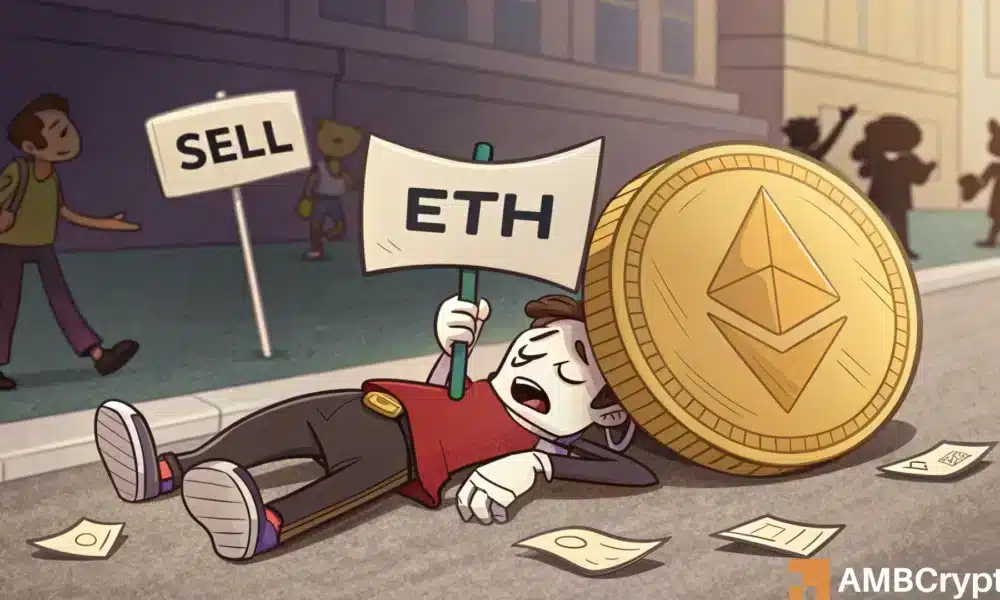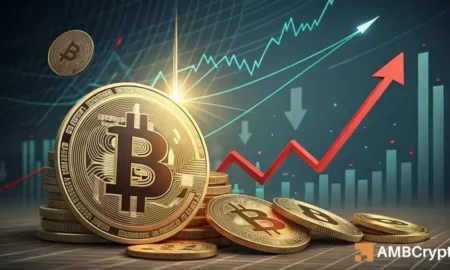The Current Landscape of Ethereum: A Deep Dive into Market Dynamics and Recovery Signals
Ethereum, the second-largest cryptocurrency by market capitalization, is currently facing a critical juncture reminiscent of the aggressive loss realization witnessed during the 2022 bear market. As market sentiment remains decidedly risk-averse, the focus has shifted to critical indicators that can signal a potential turnaround for ETH. The prevailing market conditions are characterized by significant sell-side liquidity, particularly among large holders, or ‘whales’, who are contributing to the current distribution cycles. Understanding these dynamics is essential for investors looking to navigate Ethereum’s rocky path toward recovery.
The Role of Whale Activity in Ethereum’s Sell-Side Liquidity
Recent developments have shown a pronounced sell-side liquidity concentration among Ethereum whales, especially within the $1,400 to $1,600 price range. This execution zone has been under scrutiny as major entities engage in aggressive distribution. Notably, Galaxy Digital has offloaded a staggering 62,181 ETH—valued at approximately $99.46 million—over just six trading sessions. This information reveals critical insights into market behavior, as such large-scale sell-offs can create barriers to price recovery and maintain downward pressure until we see a significant change in market dynamics, such as an influx of demand-side absorption.
Lessons from Historical Market Patterns
Ethereum’s current situation mirrors the struggles experienced during the 2022 bearish trend, where substantial sell-side pressure resulted in prolonged periods of negative Net Realized Profit/Loss (PnL). As of now, a similar atmosphere of loss realization is unfolding, significantly affecting market stability. For instance, since mid-February, when ETH was trading between $2,700 and $3,000, the cryptocurrency has lost more than 50% of its market valuation. This stark decline exemplifies the ongoing liquidation activities among holders, signaling a potential capitulation that must be addressed for market recovery.
The Necessity of Market Balance for Recovery
For Ethereum to witness a true recovery, a fundamental shift in market conditions is essential. Specifically, an equilibrium between supply and demand is requisite for any breakout or sustainable accumulation phase to take place. Currently, sell-side pressure heavily outweighs buy-side absorption, emphasizing the need for a pronounced supply-demand imbalance to restore holder confidence. Until this shift is systematically confirmed, price actions are likely to remain constrained and distribution-focused, further complicating the recovery process.
The Price Threshold for Bullish Reversal
Examining the details of the Net Realized Profit/Loss chart, it’s evident that Ethereum continues to struggle. With ETH trading at around $1,583, a concerning 300 million ETH tokens are realizing losses, especially among those who acquired their holdings at a price above $1,982. For a significant bullish reversal to materialize, Ethereum’s price must surge past this realized price threshold—a challenge that requires a price appreciation of over 20%. This necessary condition illustrates the psychological barrier faced by current holders, where any failure to breach this critical level could lead to mass capitulation among investors, undermining potential recovery efforts.
The Challenge of Increased Supply on Exchanges
Adding to the complexities of Ethereum’s recovery, the cryptocurrency has witnessed a simultaneous rise in exchange reserves, with approximately 40 million ETH deposited since April 2nd. This influx signals not only an increase in supply but also a concerning trend of sell-side pressure as traders aim to capitalize on current market conditions. In the absence of substantial demand-side absorption to counter this influx, the likelihood of a bullish reversal diminishes significantly. Thus, Ethereum’s resilience in the face of ongoing FUD (fear, uncertainty, doubt) will largely depend on market participants’ behavior and their willingness to absorb the excess supply.
Conclusion: Navigating Ethereum’s Future Trajectory
In conclusion, Ethereum is at a pivotal stage that requires careful monitoring of market dynamics, particularly related to whale activity and overall liquidity. As sell-side pressure persists amid rising losses among holders, the path to recovery hinges on the emergence of a robust demand-side absorption mechanism. For investors and stakeholders, understanding these nuances is vital in navigating the current market landscape. Staying attuned to key price thresholds and market signals will be essential for determining Ethereum’s future trajectory as it strives to reclaim stability and investor confidence.
















